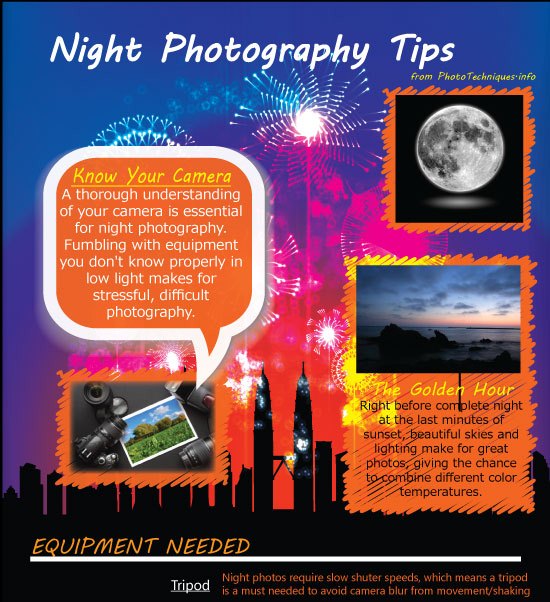Photography Tips For Beginners: Grasping Your Camera In No Time At All
Photography Tips For Beginners: Grasping Your Camera In No Time At All
Blog Article
Personnel Author-Barrett Odgaard
When you first get your electronic camera, it can really feel frustrating with all the settings and alternatives readily available. You could find yourself asking yourself how to navigate aperture, shutter speed, and ISO properly. Mastering just click the next web site is vital, but there's even more to digital photography than simply technical knowledge. Comprehending composition strategies and lighting problems can raise your pictures considerably. So, what if you could discover simple methods to enhance your skills and begin capturing excellent pictures faster than you assume? Let's discover how to transform your photography journey.
Recognizing Video Camera Setups
Understanding your video camera setups is crucial for recording magnificent pictures. When you pick up your video camera, familiarize on your own with the three primary settings: aperture, shutter rate, and ISO. Each plays a crucial duty in how your photos turn out.
Start with aperture, which regulates the amount of light entering the lens. A larger aperture (reduced f-number) allows extra light and develops an attractive history blur, perfect for pictures. Alternatively, a narrower aperture (higher f-number) keeps more of the scene in emphasis, suitable for landscapes.
Next, concentrate on shutter rate. This setting establishes how long your cam's sensor is exposed to light. A fast shutter speed freezes movement, which is excellent for activity shots, while a slow-moving shutter speed can produce stunning impacts like smooth water in landscapes.
Finally, readjust your ISO. This setting impacts your electronic camera's level of sensitivity to light. A greater ISO serves in low-light situations but can present noise or grain. Aim for the most affordable ISO possible while still accomplishing proper direct exposure.
Composition Methods
When you're out shooting, structure can make all the distinction in exactly how your images reverberate with viewers. Beginning by using the guideline of thirds; envision your structure divided right into nine equivalent sections with two horizontal and 2 upright lines. Setting crucial elements along these lines or at their crossways to create equilibrium and interest.
Next off, consider leading lines. These all-natural lines in your scene, like roads or rivers, attract the audience's eye right into the photograph, leading them with the tale you're informing.
Do not forget mounting; usage components within your scene, like trees or home windows, to create a framework around your topic, including depth and focus.
Additionally, keep an eye on your background. https://postheaven.net/odis65spencer/open-your-mind-to-a-globe-of-ingenious-photography-ideas-that-test can distract from your main topic, while a straightforward one helps it attract attention.
Last but not least, trying out proportion and patterns; they can develop a striking picture that records interest.
Learning Illumination Issues
Mastering illumination conditions is critical for catching spectacular photos, as the appropriate light can transform a normal scene into something phenomenal.
Beginning by observing all-natural light at various times of the day. Mornings and late afternoons provide the best light, known as the golden hour. The soft, cozy tones during these times can improve your pictures magnificently.
Do not avoid overcast days either; diffused light can reduce rough darkness and develop a pleasing effect, especially for pictures.
Explore backlighting by positioning your subject against the light. This method can create a wonderful halo impact and add deepness to your images.
Pay attention to your video camera settings also. Readjust the ISO, aperture, and shutter rate to match the lights problems. A greater ISO can aid in low light, yet be cautious of grain.
Utilize a tripod in darker settings to avoid blur.
Finally, do not fail to remember man-made lights. Flash and continual lights can be terrific tools for regulating light in challenging conditions.
Final thought
To conclude, understanding your video camera doesn't need to be frustrating. By recognizing your settings, applying structure methods, and taking advantage of the power of all-natural light, you'll swiftly boost your digital photography skills. Bear in mind, exercise makes ideal, so get out there and explore your newfound expertise. With time and dedication, you'll be recording stunning pictures that mirror your unique viewpoint. Appreciate the journey, and do not fail to remember to have a good time while you go to it!
